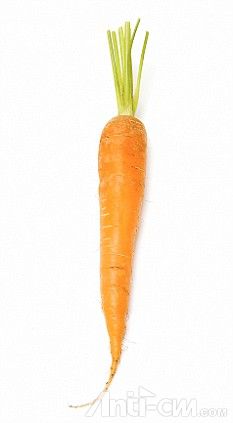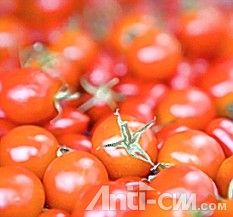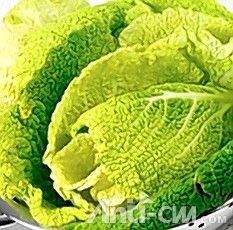|
|
Never mind not chopping your carrots. If you really want to stay healthy, eat greasy pizza and popcorn
http://www.mailonsunday.co.uk/health/article-1193790/MICHAEL-HANLON-Never-mind-chopping-carrots-If-really-want-stay-healthy-eat-greasy-pizza-popcorn.html
By Michael Hanlon Last updated at 8:05 AM on 18th June 2009

The way we cook and prepare most foods can have a tremendous impact on their health-giving benefits

Frozen vegetables are more nutritious than vegetables that are 'fresh'

Tinned tomatoes, tomato puree and even tomato ketchup may be some of the healthiest foodstuffs around

Steamed brussels sprouts, cabbage and kale are among the most nutritious vegetables

Celebrities swear by the popcorn diet

Canned vegetables are better than no vegetables at all
Carrots are one of the healthiest foods around - but the way we cook them can make them even better for you, scientists at Newcastle University have found. Lightly boiling (or roasting) the roots whole, rather than chopping them up into slices or dicing them, means you get about a quarter more of the 'healthy' chemicals found in the vegetable, including various compounds with known anti-cancer protective properties.
Raw carrots contain the same beta-carotene chemicals as cooked carrots, but they are less easily absorbed.
In fact, the way we cook and prepare most foods can have a tremendous impact on their health-giving benefits.
We all know that traditional British way with vegetables - boil them for ages in heavily salted water until they dissolve into flavourless mush - is a bad thing. If there is a general rule, it is to 'do as little as possible, and eat as fresh as possible'.
But sometimes the modern view - which says everything should be eaten raw and that fruit juice is always healthy - is wrong. And many of the perceived wisdoms handed down the generations, such as leaving potatoes in cold water before cooking them, is simply misguided.
So what is the most healthy way to eat your fruit and veg? Here, our Science Editor Michael Hanlon guides your through this nutritional and culinary maze:
[size=1.6em]FROZEN PEAS
It may come as a surprise that the frozen variety is probably better for you than 'fresh' peas.
That is because peas (along with many other vegetables) destined for the freezer are typically flashfrozen within two hours of picking and shelling, effectivelylocking in the nutrients and preventing further deterioration.
The average 'fresh' peas, on the other hand, may have spent three or four days being transported from farm (often on another continent) to plate, slowly losing vitamins and other nutrient chemicals on the way.
Rapid freezing is a particularly effective technique with peas as moisture content is low, meaning ice crystal formation (and consequent destruction of cellular walls) is minimal.
Generally, frozen vegetables are more nutritious than vegetables that are 'fresh', but out of season, i.e. those that have been stored or transported for significant amounts of time.
[size=1.6em]POTATOES
Peeled or in their jackets? Boiled, roasted or baked? Sliced or whole?
The potato is one of the healthiest staples known to Man, containing a large proportion of the nutrients needed for survival. Plus, it's easy and cheap to cultivate.
Rich in carbohydrates (in the form of starch), some vitamins, potassium and chemicals such as kukoamines - which may lower blood pressure - potatoes are so good for you that the World Health Organisation last year called for a huge increase in cultivation across the world.
But what is the best way to cook them? Unsurprisingly, deep-fried in animal fat is probably the worst.
'Crinkle-cut' and 'curly' fries are the least healthy of all, increasing the surface area-to-volume ratio and hence the amount of fat absorbed by the cooking vegetable. A greasy portion of very thin fries can contain more fat, volume for volume, than actual potato.
If you do fry potatoes, use a healthier oil such as rapeseed, cut your chips thick and don't slather them in salt (a typical portion of restaurant fries contains almost half your recommended daily sodium allowance).
The healthiest option is to do as little as possible to your spuds. Bake or boil whole, leaving the skin on (the flesh just under the potato skin contains more than 80 per cent of the vitamins found in the whole tuber, and the skin itself is rich in fibre). If boiling, minimise the amount of time the potato is in water. Heat the water before the spuds go in and do not leave raw potatoes to stand in cold water before cooking because soluble vitamins will leach out.
[size=1.6em]COOKED TOMATOES
Tomatoes belong to a select group of 'superfoods' that contain a whole suite of vital nutrients.
Unusually among vegetables, cooking tomatoes actually boosts their health-giving properties. The latest research suggests that even the greasiest tomato-based pizza topping is, in health terms, an excellent dietary choice.
Although vitamin levels fall by up to 75 per cent when the tomatoes are heated (the ascorbic acid in Vitamin C is oxidised to dehydroascorbic acid by cooking, which is nutritionally useless), levels of the hugely beneficial antioxidant chemicals called translycopenes (which give tomatoes their red colour) rise dramatically, by up to 165 per cent.
Tinned tomatoes, tomato puree and even tomato ketchup may be some of the healthiest foodstuffs around.
And adding oil - any oil - to cooked tomatoes will actually increase the amounts of lycopene you can absorb.
So, that greasy pizza may not be so terrible as it seems and gazpacho is practically medicinal.
[size=1.6em]BAGGED SALADS
Pre-prepared salads, washed, cut and wrapped in sealed polythene bags, have revolutionised the way we eat raw leaf vegetables.
Twenty years ago, if we wanted salad we bought a lettuce, washed it, chopped it up and slathered it in salad cream. Now, 70 per cent of households buy bagged salads, often packed with once-exotic leaf varieties previously unheard of, creating a market worth more than a quarter of a billion pounds a year. Critics point out that pre-prepared salad leaves are often washed in concentrated chlorine solution, and some have been found to have unacceptable levels of bacterial contamination.
They might have lost 10 to 20 per cent of their vitamins during storage and transport.
Many gourmets don't like them, but a bagged salad is far better than no salad at all.
[size=1.6em]CABBAGE, SPROUTS AND OTHER BRASSICAS
These nutritious vegetables are rich in Vitamin C, fibre, glucosinolates (thought to help the liver in its detoxification role) and minerals such as selenium- - all of which are destroyed or substantially diminished by excessive boiling.
Adding salt to the boiling water will reduce the nutritional content further because more vitamins will be dissolved out of the leaves.
Boiled to death, brassicas have the dietary value (and taste) of soggy cardboard.
But eaten raw or lightly steamed, Brussels sprouts, cabbage and kale are among the most nutritious vegetables.
[size=1.6em]FRUIT, JUICE AND SMOOTHIES
Try to eat fruit as soon as it comes off the tree - it is packed with vitamins, antioxidants, fibre and minerals. Fruit juice, on the other hand, can make you fat, rot your teeth and even give you gout.
A 400ml glass of orange juice contains more calories than a Mars Bar and gulping down a one-litre carton will give your body the same calorie jolt as a Big Mac and fries.
In juices, the bulk of the fruit (which makes you feel full), the fibre and the nutritious skin and pith, are lost. In addition, sugar and acidity concentrations are increased dramatically, putting your teeth at risk of decay.
Smoothies - which include juices blended with pulped fruit or yogurt and often added sugar - can also be high in calories. Recent research has shown that men who drink more than 400ml a day of juice or smoothies have a greater chance of gout, probably caused by elevated levels of uric acid.
Some people also find that drinking pear, grape or apple juice can cause explosive diarrhoea - caused by an inability to absorb the natural fructose sugars in the juice.
[size=1.6em]CORNY ADVICE
Sweetcorn, or maize, is rich in Vitamins B and C, folate, the antioxidant carotenoid lutein (which protects the retina from UV light), manganese and fibre.
Surprisingly, one of the healthier ways to cook corn may be to pop it.
Some varieties explode when heated and it has been claimed (by the singer Madonna and others who swear by the popcorn diet) that it is extremely healthy - the idea being that its nutrients are easier to absorb.
The problem comes with the salt, fat and sugar that are often added to popcorn.
Nutritionists have found that a typical serving of commercial popcorn, such as that sold in some cinemas, contains more fat and salt than a fried breakfast (and around 1,500 calories) and more sugar than a bar of chocolate.
[size=1.6em]DON'T CAN THE CANS
Generally, fresh is best, though frozen vegetables can contain more valuable nutrients than the fresh versions.
But does canning vegetables such as carrots, peas and spinach destroy their nutritional value?
The answer depends on how soon the vegetables are canned after harvesting (as short a time as possible will preserve more of the nutrients, which will be at their peak levels just after picking), how much salt, sugar and other unhealthy chemicals are added to the vegetables (some tins contain more than a teaspoon of salt) and, of course, what type of vegetable is in the can.
Tinned fruit and vegetables will usually contain fewer nutrients (more than 50 per cent of the vitamin C can be lost, for example) than the fresh version.
The nutrients that survive the canning process are often concentrated in the juice - which is poured down the sink.
But provided you avoid high-salt and high-sugar brands (difficult in the case of tinned fruit, which is usually immersed in refined sucrose syrup), canned vegetables are better than no vegetables at all.

|
chopping, mind, Never, Really, stay, chopping, mind, Never, Really, stay, chopping, mind, Never, Really, stay
|